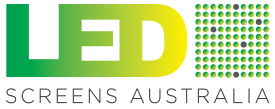LED FAQ’s
- What is a LED Screen
A LED screen is a display which uses light-emitting diodes. An LED panel is a small display, or a component of a larger display or screen. Originally used outdoors as store signs or billboards, LED’s are now used as indoor screens and in destination signs on public transport vehicles. LED panels are sometimes used as form of lighting, for the purpose of general illumination, task lighting, or even stage lighting rather than in a display.
- Types of led screens
There are two types of LED panels: DIP (using individual discrete LEDs) and surface-mounted device (SMD) panels. Most outdoor screens are built around DIP LED’s. A cluster of red, green, and blue diodes is driven together to form a full-colour pixel, usually triangular in shape. These pixels are spaced evenly apart and are measured from centre to centre to give the measurement known as pixel pitch.
Most indoor screens on the market are built using SMD technology, a trend that is now extending to the outdoor market. An SMD pixel consists of red, green, and blue diodes mounted together on a chipset, which is then mounted on the driver PC board. The individual diodes are smaller than a pinhead and are set very close together. SMD LED’s are normally white in appearance and technology has been steadily advancing with brightness going up and pixel pitch going down.
- Pixel Pitch and Minimum Viewing Distance
The term Pixel Pitch is one that you will see listed with every LED Screen. It is the measurement from the centre of one LED to the centre of the next LED. Therefore a P6 screen has a 6mm gap between each pixel (SMD) or each LED of the same colour (discrete).
Common LED resolutions are P1.6, P1.8, P2.5, P3, P3.9, P4.8, P6 and P10 for indoor applications and P3.9, P4.8, P6, P10, P12, P16, P20 and P25 for outdoor applications.
The easiest way to calculate the minimum viewing distance to watch a LED screen is 1meter of distance per 1mm of pixel pitch. An outdoor P10 screen would have a minimum viewing distance of approximately 10 meters.
- What is the lifespan for a LED screen
The lifespan for a good quality screens is over 100,000 hours, but it depends how the client is taking care of his LED screen and how it is used. The most important factors in getting the most out of your LED screen are;
LED Screen Maintenance
Maintenance is a very important factor; dusty environments require more often maintenance to the LED screen than clean environments. The soldering of the LED chips can dry out and break which require changing often pieces like the LED modules and the receiving cards.
LED Screen Temperature
The temperature of the LED screen is very important to keep it cool. In hot environments it is wise to install a cooling system inside the LED screen to avoid overheating.
LED Screen Power Protection
Electrical peaks can put more force on the electrical components which will decrease life time. It is wise to install a protection that can control the peaks.
LED Quality
The most important factor is to have a LED screen that is build correctly. LED Screens Australia uses only components of the highest quality.
- What size screen do I need
This is a very hard question to answer because each client’s requirements will be different. How far away will the viewers be? What type of information will be on the screen? Is the screen indoor or outdoor? Is the screen or scoreboard in direct sunlight? These are the questions that need to be taken into consideration before the correct screen can be chosen. Please call LED Screens Australia with help in choosing the correct LED screen or Scoreboard for your needs.
- What can I show on my LED Screen
The answer is pretty much anything. From Jpegs and still images to a Full HD video. From a single line of text to a cricket scoreboard. TV, Foxtel, PC display, Custom Graphics. As long as you have the correct size and resolution on your screen, anything is possible.
- Why are your LED Screens and Scoreboards so much cheaper than anybody else
The simple answer to this question is mark-up. Over the last 5 years the cost of electronics has reduced significantly. I can remember doing AV installations when a 42’ Plasma TV costed about $5,000 and a 50’ Plasma was over $15,000. Nowadays you can purchase a 42’ screen for under $400 and a 50’ screen for under $900.
LED technology has had a similar price reduction. There are over 5000 manufactures of LED equipment in China (some very bad) but it has reduced the price of LED components and made the market very competitive. LED Screens Australia has spent a very long time sourcing and trialling the highest quality LED systems and has passed the price reductions onto its clients.
- I still have questions, can you help me
Of course we can! We are always happy to help with any questions you may have, you can call us anytime, 7 days a week or you can contact us via email. Never be afraid to ask for advice or help with any LED issues you have. Even if you have an existing LED screen and you need help, LED Screens Australia is here for you.
